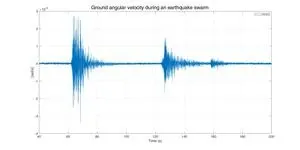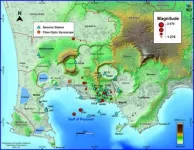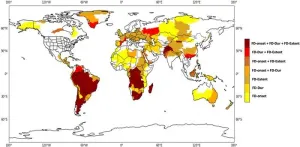(Press-News.org) CHAMPAIGN, Ill. — Urban planners increasingly are interested in green infrastructure projects for the health and climate benefits they bring to cities. But without attention to historical development patterns and existing power structures, such projects may not benefit all residents equally and may exacerbate social and racial inequalities, says a group of researchers and practitioners of nature-based solutions for urban areas.
The researchers outlined their recommendations for a justice-oriented approach to urban greening projects in a paper published in the journal Urban Forestry and Urban Greening.
“For the environmental and ecological questions, we have a pretty good handle on what we need to do. The questions that are the hardest and the most important for people to tackle are how to work well with communities, particularly marginalized communities,” said Rebecca Walker, a co-lead author of the paper and a professor of urban and regional planning at the University of Illinois Urbana-Champaign.
The other lead authors of the paper are Kate Derickson, a professor of geography, environment and society at the University of Minnesota and the co-director of the CREATE Initiative to address equitable access to environmental amenities; and Maike Hamann, a lecturer in development and sustainability at the Centre for Geography and Environmental Science at the University of Exeter in the United Kingdom.
Green infrastructure can benefit the ecosystem in multiple ways, such as flood and heat mitigation, carbon storage and sequestration, and opportunities for recreation and improvement in mental and physical health, said the researchers. But urban landscapes are unequal in the distribution of environmental benefits and harms.
For example, water quality standards for rivers in St. Louis, Missouri, reflect the city’s racial geographies, with waterways in white neighborhoods historically managed for recreation and those in Black neighborhoods historically managed for industrial uses. Today the water quality standards for bodies of water in white neighborhoods remain higher than for those in Black neighborhoods, according to the paper.
“Plans must contend with the histories of discriminatory policies and practices that produced underlying inequalities, and be attentive to the ways that contemporary efforts might reproduce or undermine the structures driving inequities in urban greenspace. This is true for new greenspace developments, as well as changes to existing urban nature,” the researchers wrote.
A variety of disciplines need to contribute to urban green infrastructure, including those that ask questions about the social implications of ecological and economic projects, they said.
“If they are already disproportionately located near more advantaged communities, as we invest and expand in those areas, the inequities get doubled down,” Walker said.
Among the factors that planners should consider is the scale of a project and how a particular community might be affected by a project, the researchers said. For example, a wetlands mitigation program in Mississippi allowed developers to fill in wetlands in one location while buying wetland mitigation credits elsewhere. Residents of the small, Black community of Turkey Creek, Mississippi, argued that the practice harmed their neighborhood, which was hit hard by Hurricane Katrina, by removing wetlands that could absorb stormwater.
“This suggests that … attempting to address large-scale issues (such as global climate change) cannot be done equitably without careful attention to local-scale issues (such as neighborhood flooding),” the researchers wrote.
Their research emphasizes the importance of building relationships with communities and accepting uncertainty about the outcomes of their work. While Derickson and Walker were working with a community on water quality and flooding issues, the community members repeatedly raised concerns about gentrification related to green infrastructure solutions. The researchers shifted their focus and developed an antigentrification toolkit offering ways to invest in urban greening without driving displacement of residents. Being open to ambiguity in defining a problem led to a new opportunity for their work to lead to justice-oriented policies, they said.
Finally, the researchers advocate for an approach that promotes modest projects that address the needs and priorities of a community’s residents and allows them to help shape the projects over large developer-oriented infrastructure investments.
“While the uptake of urban green infrastructure represents a promising development in urban sustainability and development practices, it cannot be assumed that these projects will benefit all residents or promote urban equity. Indeed, the history of urban development and infrastructure projects shows that there is a tendency for such projects to consolidate benefits for powerful groups, often at the expense of the vulnerable or marginalized,” the researchers wrote.
Editor’s notes: To contact Rebecca Walker, email rhwalker@illinois.edu.
The paper “The intersection of justice and urban greening: Future directions and opportunities for research and practice” is available online. DOI: 10.1016/j.ufug.2024.128279
END
Green infrastructure plans need to consider historical racial inequalities, say researchers
Urban greening projects should consider historical development patterns to avoid exacerbating the unequal distribution of environmental benefits, says Rebecca Walker, a University of Illinois Urbana-Champaign urban and regional planning professor
2024-05-21
ELSE PRESS RELEASES FROM THIS DATE:
ENDO 2024 press conferences to highlight male birth control, anti-obesity medications
2024-05-21
BOSTON—Researchers will delve into emerging research in diabetes, obesity, reproductive health and other aspects of hormone health during the Endocrine Society’s ENDO 2024 news conferences June 1-4.
The Society also will share its vitamin D Clinical Practice Guideline publicly for the first time during a news conference on Monday, June 3. Reporters will have an opportunity to hear directly from members of the guideline development panel.
Other press conferences will feature select abstracts that are being presented at ENDO 2024, the Endocrine Society’s ...
Highly sensitive fiber optic gyroscope senses rotational ground motion around active volcano
2024-05-21
WASHINGTON — Researchers have built a prototype fiber optic gyroscope for high resolution, real-time monitoring of ground rotations caused by earthquakes in the active volcanic area of Campi Flegrei in Naples, Italy. A better understanding of the seismic activity in this highly populated area could improve risk assessment and might lead to improved early warning systems.
“When seismic activity occurs, the Earth’s surface experiences both linear and rotational movements,” said research team leader Saverio Avino from the Consiglio Nazionale delle Ricerche Istituto Nazionale di Ottica (CNR-INO) ...
Research reveals endurance exercise training impacts biological molecules
2024-05-21
As part of an ongoing national research effort to better understand how physical activity improves health and prevents disease, seven University of Colorado Department of Medicine faculty members contributed to an article recently published in Nature, an international journal of science.
The paper, “Temporal dynamics of the multi-omic response to endurance exercise training,” discusses how eight weeks of endurance exercise training affected male and female young adult rats. The researchers found that all bodily tissues that were tested ...
Does managing oxidative stress hold the key to effectively treating Alzheimer’s disease
2024-05-21
Amsterdam, May 21, 2024 – The number of people suffering from Alzheimer’s disease (AD) is expected to reach 100 million by 2050, but there is still no effective therapy. Leading researchers from around the world assess how oxidative stress (OS) may trigger AD and consider potential therapeutic targets and neuroprotective drugs to manage the disease in a collection of articles in a special supplement to the Journal of Alzheimer’s Disease, published by IOS Press.
AD is the most common type of dementia and involves areas of ...
Warming climate intensifies flash droughts worldwide
2024-05-21
WASHINGTON — Sudden, severe dry spells known as flash droughts are rising in intensity around the world, with a notable exception in mountainous Central Asia, where flash drought extent is shrinking, according to new research. Heat and changes to precipitation patterns caused by a warming climate are driving these trends, the study found.
Flash droughts arrive suddenly, within weeks, hitting communities that are often not prepared and causing lasting impact. They are an emerging concern for water and food security. The new study is the first to apply a systematic, quantitative approach to the global incidence of flash drought, mapping hotspots and ...
US public health preparedness and response to highly pathogenic avian influenza A(H5N1) viruses
2024-05-21
About The Study: Public health authorities in nearly all states and territories surveyed reported the ability to monitor and test persons exposed to highly pathogenic avian influenza (HPAI) A(H5N1) virus. However, jurisdictions varied in their capacity to monitor exposed persons, in recommendations for use of antivirals, and in potential use of H5N1 vaccines, if available, among first responders.
Corresponding Author: To contact the corresponding author, Noah Kojima, M.D., email nkojima@cdc.gov.
To access the embargoed study: Visit our For The Media website at this ...
DRI to host AWE+ wildfire summit
2024-05-21
Today, DRI, one of our nation’s leading applied environmental research institutes, together with its Foundation, announced a new global initiative with the first in a series of summits. The event will be held at Encore Las Vegas from August 21-23, 2024.
The AWE+ initiative will promote an Adaptable World Environment of strong, resilient communities in a climate shifting world. AWE+ 2024 - Wildfire Recovery and Resilience: Working Across Silos to Drive Solutions - is a global call-to-action for communities ...
MD Anderson Research Highlights for May 21, 2024
2024-05-21
HOUSTON ― The University of Texas MD Anderson Cancer Center’s Research Highlights showcases the latest breakthroughs in cancer care, research and prevention. These advances are made possible through seamless collaboration between MD Anderson’s world-leading clinicians and scientists, bringing discoveries from the lab to the clinic and back.
Recent developments at MD Anderson offer insights into biomarkers that predict immunotherapy responses, a possible treatment strategy for patients with LKB1-deficient cancers, therapeutic targets to prevent acute myeloid leukemia (AML) progression ...
Polymer research aims to expand possibilities in sensor technology
2024-05-21
Sensors enable us to monitor changes in systems of all kinds.
The materials at the heart of those sensors, of course, ultimately determine their end-use application. Devices made of silicon, for example, enable ultrafast processing in computers and phones, but they aren’t pliable enough for use in physiological monitoring.
They also require a lot of energy to produce.
Lehigh University professor Elsa Reichmanis, Carl Robert Anderson Chair in the Department of Chemical and Biomolecular Engineering, recently received a grant from the National ...
New therapeutic avenues in bone repair
2024-05-21
Birmingham researchers have shown PEPITEM, a naturally occurring peptide (small protein) holds promise as a new therapeutic for osteoporosis and other disorders that feature bone loss, with distinct advantages over existing drugs.
PEPITEM (Peptide Inhibitor of Trans-Endothelial Migration) was first identified in 2015 by University of Birmingham researchers.
The latest research, published today in Cell Reports Medicine, show for the first time that PEPITEM could be used as a novel and early clinical intervention to reverse the impact of age-related musculoskeletal diseases, with ...
LAST 30 PRESS RELEASES:
Making lighter work of calculating fluid and heat flow
Normalizing blood sugar can halve heart attack risk
Lowering blood sugar cuts heart attack risk in people with prediabetes
Study links genetic variants to risk of blinding eye disease in premature infants
Non-opioid ‘pain sponge’ therapy halts cartilage degeneration and relieves chronic pain
AI can pick up cultural values by mimicking how kids learn
China’s ecological redlines offer fast track to 30 x 30 global conservation goal
Invisible indoor threats: emerging household contaminants and their growing risks to human health
Adding antibody treatment to chemo boosts outcomes for children with rare cancer
Germline pathogenic variants among women without a history of breast cancer
Tanning beds triple melanoma risk, potentially causing broad DNA damage
Unique bond identified as key to viral infection speed
Indoor tanning makes youthful skin much older on a genetic level
Mouse model sheds new light on the causes and potential solutions to human GI problems linked to muscular dystrophy
The Journal of Nuclear Medicine ahead-of-print tip sheet: December 12, 2025
Smarter tools for peering into the microscopic world
Applications open for funding to conduct research in the Kinsey Institute archives
Global measure underestimates the severity of food insecurity
Child survivors of critical illness are missing out on timely follow up care
Risk-based vs annual breast cancer screening / the WISDOM randomized clinical trial
University of Toronto launches Electric Vehicle Innovation Ontario to accelerate advanced EV technologies and build Canada’s innovation advantage
Early relapse predicts poor outcomes in aggressive blood cancer
American College of Lifestyle Medicine applauds two CMS models aligned with lifestyle medicine practice and reimbursement
Clinical trial finds cannabis use not a barrier to quitting nicotine vaping
Supplemental nutrition assistance program policies and food insecurity
Switching immune cells to “night mode” could limit damage after a heart attack, study suggests
URI-based Global RIghts Project report spotlights continued troubling trends in worldwide inhumane treatment
Neutrophils are less aggressive at night, explaining why nighttime heart attacks cause less damage than daytime events
Menopausal hormone therapy may not pose breast cancer risk for women with BRCA mutations
Mobile health tool may improve quality of life for adolescent and young adult breast cancer survivors
[Press-News.org] Green infrastructure plans need to consider historical racial inequalities, say researchersUrban greening projects should consider historical development patterns to avoid exacerbating the unequal distribution of environmental benefits, says Rebecca Walker, a University of Illinois Urbana-Champaign urban and regional planning professor





